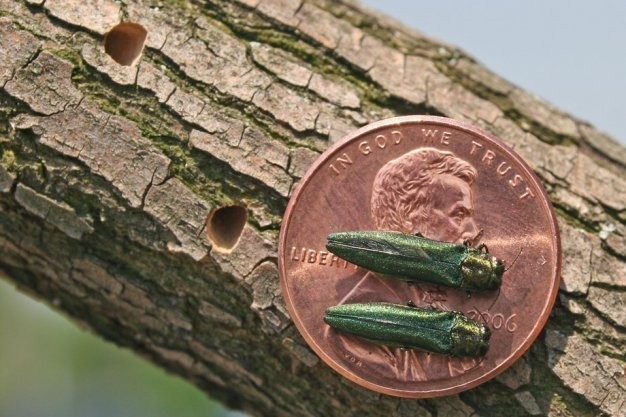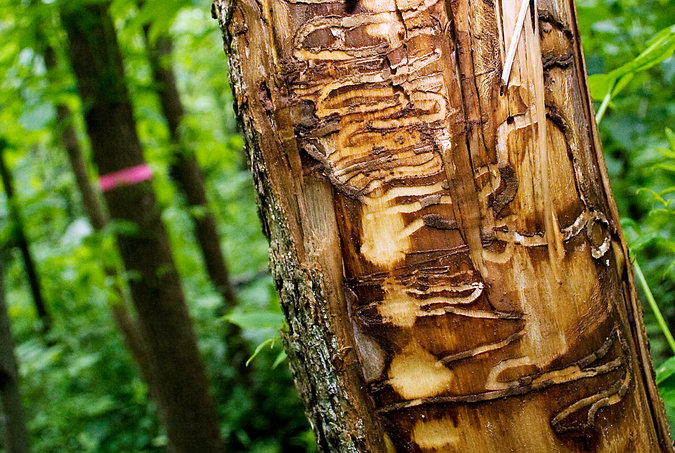COVID-19 poses no threat to plants, but our leafy friends are no strangers to pandemics of their own: chestnut blight, Dutch elm disease, sudden oak death, and other pathogens have each done tremendous damage to forests in America. Right now, the Pacific northwest is bracing itself for the inevitable arrival of a huge threat to an ecologically vital tree species. Ladies, gentlemen, and those who identify otherwise, meet the emerald ash borer (Agrilus planipennis); EAB, for short.

Like Yoda, this beastie is green and not to be judged by its size; unlike Yoda, it is very much on the dark side. The larval phase of EAB enters the bark of (you guessed it!) ash trees, where it feeds on the cambium (the layer of wood just underneath the bark). This is also the part of the tree where transport of water and nutrients happens (xylem and phloem, for those of you looking for good Scrabble words). The EAB larvae eat their way through this layer in a serpentine fashion, which cuts the xylem and phloem so the tree can’t properly move food and water around. Result: dead ash trees.

But wait: there’s more bad news! First, because they’re so small, EAB are very difficult to detect; you’re not likely to actually see adults until there’s already an established population. Second, they spend much more time as larvae than they do as adults, which means most of their year-long life cycle is spent inside of trees. As a result, the first real sign that they’ve arrived in a new area is that the tops of ash trees start dying for no apparent reason. Since there’s usually a lag between infestation and tree dieback, this comes too late to serve as much of a warning–crown dieback means EAB is already there in numbers large enough to kill trees.
EAB has been moving steadily outward from its initial U.S. detection point in Michigan, in 2002; it is currently established as far west as Colorado. Most ecologists agree that its arrival in Oregon is a matter of when, not if; the native Oregon ash (Fraxinus latifolia) is highly susceptible, as are ornamental ash trees on streets and in yards, so it’s anticipated that EAB will spread rapidly once it arrives. The only good news here is that it is nearly exclusive to ash trees; conifers and non-ash hardwoods (with two exceptions: white fringetree [Chionanthus virginicus] and cultivated olives [Olea europea]) are not susceptible.
Staff from the City of Portland’s Bureau of Environmental Services are initiating a study of ash distribution along several local streams, including Johnson Creek, in order to better understand where EAB might become established, how it might move around, and what its impact might be. If you live on Johnson Creek, you might be receiving a letter from them, asking to access your property as part of the study; a short visit to gather some data is all they need. Please consider participating in the study; the more information we have, the better we can prepare for EAB’s arrival, which will hopefully let us minimize its image.
In the meantime, one action area restoration ecologists are taking is to refrain from planting young Oregon ash as part of revegetation efforts. New ash plantings could serve as stepping stones–both in space and time–for EAB to travel more easily, so “social distancing” is the order of the day for these trees! The other main actions everyone can take are: 1) Don’t transport firewood–this is the main route by which several insect pests (EAB, the Asian long-horned beetle, and others) are introduced to new areas. Acquire firewood locally, don’t bring your own. 2) Learn to spot signs of infestation, and report them to the Oregon Invasive Species hotline: https://oregoninvasiveshotline.org/ The linked site below is a good source for further information; the more eyes we have looking for this pest, the faster we can know when it arrives and move to contain it.
